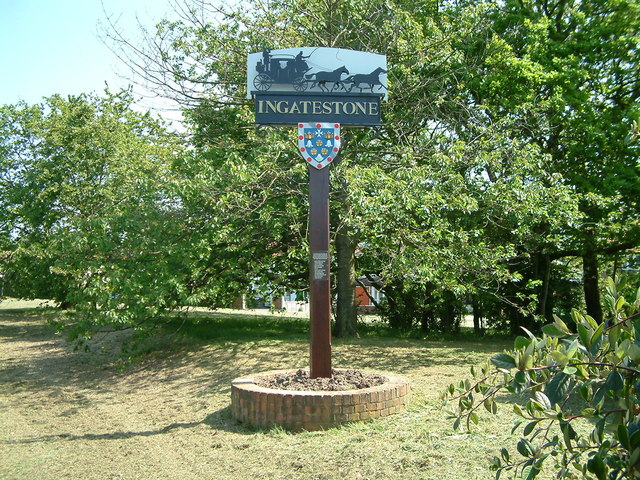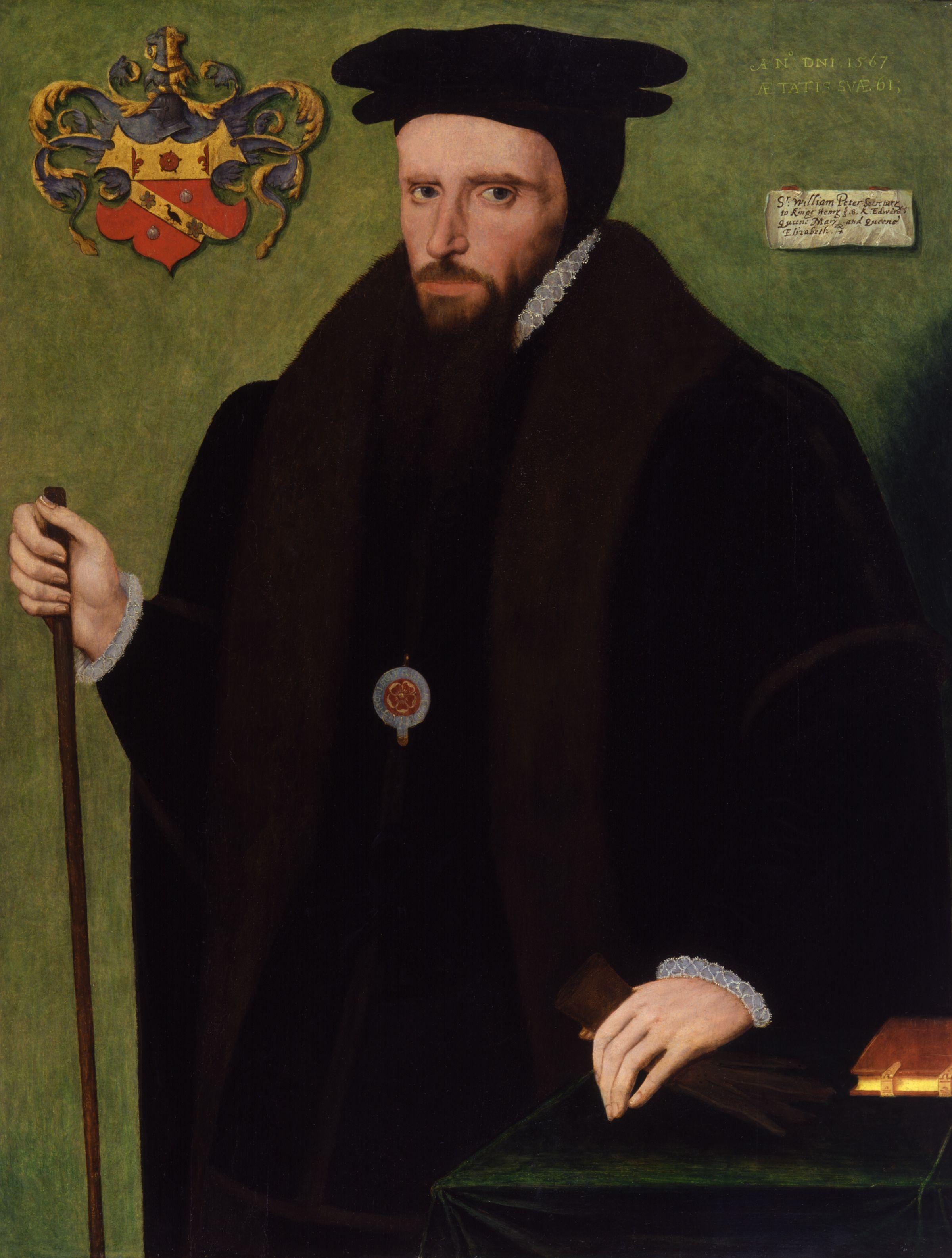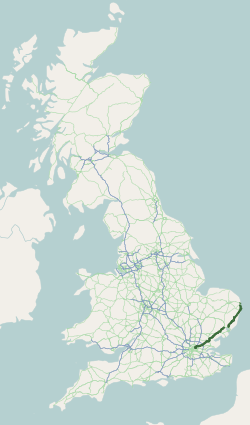|
Ingatestone
Ingatestone is a village and former civil parish in Essex, England, with a population of 5,409 inhabitants at the United Kingdom 2021 Census, 2021 Census. Just north lies the village of Fryerning; the two now forming the parish of Ingatestone and Fryerning, in the Borough of Brentwood. Ingatestone lies in the Metropolitan Green Belt north-east of London. Its built-up area straddles the A12 road (England), A12 trunk road and the Great Eastern Main Line railway. History Ingatestone appeared in Saxon people, Saxon times on the Essex Great Road (now the A12 road (England), A12) between the Roman towns of Londinium (London) and Camulodunum (Colchester). The name means "Ing at the Stone", the suffix distinguishing it from nearby settlements that also formed part of the manor of Ing. It is first recorded in 1283 as ''Gynges atte Ston''. It appears as "Inge atte Stone" in 1433. The village is built on boulder clay lands. The village stone, deposited by glacial action, is unusual fo ... [...More Info...] [...Related Items...] OR: [Wikipedia] [Google] [Baidu] |
Ingatestone Hall
Ingatestone Hall is a Grade I listed 16th-century manor house in Essex, England. It is located outside the village of Ingatestone, approximately south west of Chelmsford and north east of London. The house was built by Sir William Petre, and his descendants ( the Barons Petre) live in the house to this day. Part of the house is leased out as offices while the current Lord Petre's son and heir apparent lives in a private wing with his family. The Hall formerly housed Tudor monarchs such as Queen Elizabeth I. The hall is open to the public on selected afternoons between Easter and September. History William Petre bought Ingatestone manor soon after the Dissolution of the Monasteries for some £850 and commissioned the building of the house. In June 1561, Queen Elizabeth I spent several nights at Ingatestone Hall on her royal progress, where she held court. The Petre family laid on a lavish welcome, procuring food and drink and decorating the house. In November 1564, L ... [...More Info...] [...Related Items...] OR: [Wikipedia] [Google] [Baidu] |
William Petre
Sir William Petre (c. 1505 – 1572) (pronounced ''Peter'') was Secretary of State to three successive Tudor monarchs, namely Kings Henry VIII, Edward VI and Queen Mary I. He also deputised for the Secretary of State to Elizabeth I. Educated as a lawyer at the University of Oxford, he became a public servant, probably through the influence of the Boleyn family, one of whom, George Boleyn, he had tutored at Oxford and another of whom was Queen Anne Boleyn, second wife of King Henry VIII. He rose rapidly in the royal service and was knighted in 1543. Sir William Petre was adept at side-stepping the great religious controversies of the day; in January 1544 he was appointed Secretary of State. He navigated the ship of state through the rest of Henry's troubled reign, managing a smooth succession in 1547. He held high office throughout the reigns of Henry VIII, Edward VI, Mary I and Elizabeth I until, owing to ill health he retired a rich man to his manor of Ingatestone, in Ess ... [...More Info...] [...Related Items...] OR: [Wikipedia] [Google] [Baidu] |
Ingatestone And Fryerning
Ingatestone and Fryerning is a civil parish in the Brentwood borough of Essex, England. The parish includes the villages of Ingatestone and Fryerning, and covers an area of . History The civil parish was formed on 24 March 1889 by the Local Government Board's Provisional Orders Confirmation (Poor Law) (No. 6) Act 1888 ( 51 & 52 Vict. c. lxiii), which merged the ancient parishes of Ingatestone and Fryerning. The two parishes were oddly shaped, with the parish of Fryerning running from the north-west to the south-east of Ingatestone, bisecting the other parish. Unusually, most of the village of Ingatestone was in the parish of Fryerning, and therefore not in the parish of Ingatestone. On 1 October 1950 some land around Handley Green was moved to the parish of Margaretting, and at the same time an area to the south-west of Margaretting Hall was added to Ingatestone and Fryerning. Parish council A year after the passing of the Local Government Act 1894, Ingatestone and Fryernin ... [...More Info...] [...Related Items...] OR: [Wikipedia] [Google] [Baidu] |
Fryerning
Fryerning is a small village and former civil parish, now in the parish of Ingatestone and Fryerning, in the Brentwood district, in the county of Essex, England. It is situated approximately north of Ingatestone. The parish church of ''St. Mary the Virgin'', on Blackmore Road, dates back from the 11th century, with a 15th-century brick tower. It has a memorial stained glass window to the murdered politician Airey Neave, which was unveiled by his cousin Penelope in 1985. An ancient English Yew, found to the west of the church and is over a millennium old, is thought to be one of Essex's oldest trees. In 1881, the parish had a population of 704. Fryerning is located in mid-Essex and has several big areas of woodland populated by several large herds of deer, which are frequently seen by walkers and cyclists. The village has no shops, but two pubs: ''The Cricketers'' and ''The Viper''; the latter becomes particularly busy during its biannual beer festivals. History Fryernin ... [...More Info...] [...Related Items...] OR: [Wikipedia] [Google] [Baidu] |
Brentwood (borough)
The Borough of Brentwood is a Non-metropolitan district, local government district with borough status in the United Kingdom, borough status in Essex, England. The borough is named after its main town of Brentwood, Essex, Brentwood, where the council is based; it includes several villages and the surrounding rural area. The neighbouring districts are Epping Forest District, Epping Forest, City of Chelmsford, Chelmsford, Borough of Basildon, Basildon, Thurrock and the London Borough of Havering. History The former Brentwood Urban District had been created in 1899. Urban district (England and Wales), Urban districts were abolished in 1974 under the Local Government Act 1972. A new non-metropolitan district was created on 1 April 1974 covering the whole of the former Brentwood Urban District plus parts of another two districts, which were all abolished at the same time: *Brentwood Urban District *Chelmsford Rural District (two parishes only, rest went to City of Chelmsford, Chelms ... [...More Info...] [...Related Items...] OR: [Wikipedia] [Google] [Baidu] |
Borough Of Brentwood
The Borough of Brentwood is a local government district with borough status in Essex, England. The borough is named after its main town of Brentwood, where the council is based; it includes several villages and the surrounding rural area. The neighbouring districts are Epping Forest, Chelmsford, Basildon, Thurrock and the London Borough of Havering. History The former Brentwood Urban District had been created in 1899. Urban districts were abolished in 1974 under the Local Government Act 1972. A new non-metropolitan district was created on 1 April 1974 covering the whole of the former Brentwood Urban District plus parts of another two districts, which were all abolished at the same time: * Brentwood Urban District * Chelmsford Rural District (two parishes only, rest went to Chelmsford) ** Ingatestone and Fryerning ** Mountnessing * Epping and Ongar Rural District (five parishes only, rest went to Epping Forest) ** Blackmore ** Doddinghurst ** Kelvedon Hatch ** Navest ... [...More Info...] [...Related Items...] OR: [Wikipedia] [Google] [Baidu] |
St Edmund And St Mary's Church, Ingatestone
St Edmund and St Mary's Church is the Church of England parish church in the village of Ingatestone in Essex. It dates to the 11th century and received major modifications in the 17th century. Its west tower is in red brick and is described by Simon Jenkins in his 1999 book ''England's Thousand Best Churches'' as "magnificent, a unified Perpendicular Period, Perpendicular composition of red brick with black Tudor diapering. Strong angled buttresses rise to a heavy battlemented crown, the bell openings plain." One of the three pieces of a Sarsen, Sarsen stone is located next to the west door of the church the other two pieces being left either side of Fryerning Lane. A chapel built onto the chancel contains several family tombs of the Baron Petre, Petre family, which lived locally at Ingatestone Hall - these include the monuments of William Petre, his second wife Anne Browne, John Petre, 1st Baron Petre and his wife. The tower is 83 feet (25 metres) high.Flannery, Julian (2016). ... [...More Info...] [...Related Items...] OR: [Wikipedia] [Google] [Baidu] |
Great Eastern Main Line
The Great Eastern Main Line (GEML, sometimes referred to as the East Anglia Main Line) is a major railway line on the British railway system which connects Liverpool Street station in central London with destinations in east London and the East of England, including , , , and . Its numerous branches also connect the main line to , , , Harwich and a number of coastal towns including Southend-on-Sea, , and .National Rail, ''Rail Services Around London & the South East'', (2006) Its main users are commuters travelling to and from London, particularly the City of London, which is served by Liverpool Street, and areas in east London, including the Docklands financial district via the London Underground and Docklands Light Railway connections at Stratford. The line is also heavily used by leisure travellers, as it and its branches serve a number of seaside resorts, shopping areas and countryside destinations. The route also provides the main artery for substantial freight ... [...More Info...] [...Related Items...] OR: [Wikipedia] [Google] [Baidu] |
A12 Road (England)
The A12 is a major road in Eastern England. It runs north-east/south-west between London and the coastal town of Lowestoft in the north-eastern corner of Suffolk, following a similar route to the Great Eastern Main Line until Ipswich. A section of the road between Lowestoft and Great Yarmouth became part of the A47 road, A47 in 2017. Between the junctions with the M25 and the A14, the A12 forms part of the unsigned International E-road network, Euroroute European route E30, E30 (prior to 1985, it was the E8). Unlike most Great Britain road numbering scheme, A roads, this section of the A12, together with the A14 road (Great Britain), A14 and the A55 road (Great Britain), A55, has junction numbers as if it were a motorway. The section of the A12 through Essex has sections of dual two lanes and dual three lanes, with eight changes in width between the M25 to Ipswich. It was named as Britain's worst road because of "potholes and regular closures due to roadworks" in a 2007 survey b ... [...More Info...] [...Related Items...] OR: [Wikipedia] [Google] [Baidu] |
Essex
Essex ( ) is a Ceremonial counties of England, ceremonial county in the East of England, and one of the home counties. It is bordered by Cambridgeshire and Suffolk to the north, the North Sea to the east, Kent across the Thames Estuary to the south, Greater London to the south-west, and Hertfordshire to the west. The largest settlement is Southend-on-Sea, and the county town is Chelmsford. The county has an area of and a population of 1,832,751. After Southend-on-Sea (182,305), the largest settlements are Colchester (130,245), Basildon (115,955) and Chelmsford (110,625). The south of the county is very densely populated, and the remainder, besides Colchester and Chelmsford, is largely rural. For local government purposes Essex comprises a non-metropolitan county, with twelve districts, and two unitary authority areas: Thurrock Council, Thurrock and Southend-on-Sea City Council, Southend-on-Sea. The districts of Chelmsford, Colchester and Southend have city status. The county H ... [...More Info...] [...Related Items...] OR: [Wikipedia] [Google] [Baidu] |
Barking Abbey
The Abbey of St Mary and St Ethelburga, founded in the 7th-century and commonly known as Barking Abbey, is a former Roman Catholic, royal monastery located in Barking, in the London Borough of Barking and Dagenham. It has been described as having been "one of the most important nunneries in the country". Originally established in the 7th century, from the late 10th century the abbey followed the Rule of St. Benedict. The abbey had a large endowment and sizeable income but suffered severely after 1377, when the River Thames flooded around of the abbey's land, which was unable to be reclaimed. However, at the time of the dissolution, it was still the third-wealthiest women's monastery in England. The abbey existed for almost 900 years, until its closure in 1539, as part of King Henry VIII's Dissolution of the Monasteries. It had many notable abbesses including several saints, former queens and the daughters of kings. The abbess of Barking held precedence over all other abbess ... [...More Info...] [...Related Items...] OR: [Wikipedia] [Google] [Baidu] |





